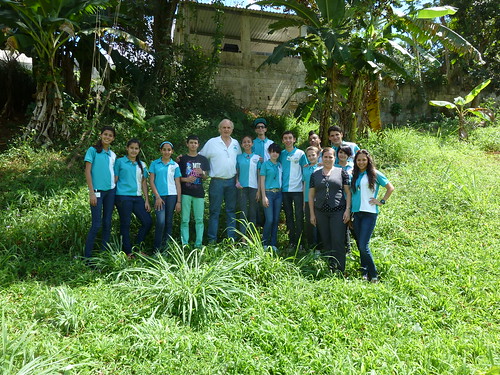
This post is part of the Science Tuesday feature series on the USDA blog. Check back each week as we showcase stories and news from USDA’s rich science and research portfolio.
To celebrate National Hispanic Heritage Month, USDA’s Research, Education, and Economics mission area will highlight those who are making significant contributions to American agriculture.
I am fortunate to have a job that I love where I interact with a wide and diverse audience -- from Kindergarten students through adolescents to undergraduates and to adults. My role as Director of the USDA’s Hispanic Serving Institutions National Program (HSINP) allows me to educate students and communities about all of the opportunities agriculture has to offer. It’s important that we keep attracting the best and brightest minds to the field to meet the agricultural challenges ahead.
The Future Scientists Program helps USDA’s ninety Agricultural Research Service (ARS) laboratories in America connect with surrounding communities and schools, bringing science teachers into their local research lab for workshops and hands-on, inquiry-based activities. The program links the teachers with ARS scientists, their local laboratory site and current agricultural science research. Aligned with the National Science Standards, the program is appropriate for all grade levels, K-12.
The year-long program focuses on helping teachers become more effective in the field of science, technology, engineering, and mathematics (STEM) education and inspiring students to continue their studies in science. Currently focusing on insect life cycles using ARS research on the corn earworm (Helicoverpa zea), the program kicks-off with students exploring existing corn earworm research projects designed to help farmers control these destructive pests. After the two-day introduction, research scientists share their expertise and research projects with the students. Throughout the year, the Program Director visits the lab to teach and follow-up on the students’ progress.
Recently, I returned to Puerto Rico to support twenty teachers that traveled to the Tropical Agriculture Research Station (TARS) in Mayaguez, Puerto Rico to teach budding scientists. One student was proud to present her research on the corn earworm (Helicoverpa zea), presenting an amazing mix of slides and video. Recognizing her high interests, she gained the opportunity to shadow scientists at TARS for a day to learn more about entomology and plant research as possible career fields. Another teacher’s group of 45 students have become so excited about corn earworm research that they, too, will be offered the chance to spend a day at TARS.
The Future Scientists Program gives students great, real-life experiences and improves their scientific knowledge and skills. Data from one school district in Texas showed student gains of 18% across 10 campuses on a pre- and post-evaluation. And at one elementary campus, research showed a narrowing of the achievement gap between white and Hispanic students, and between economically-disadvantaged students. The ARS research laboratories have become invaluable, educational resources for their communities. The ultimate goal is to develop student STEM potential, and to encourage them to pursue science courses in college and enter the science career pipeline as Future Scientists.


